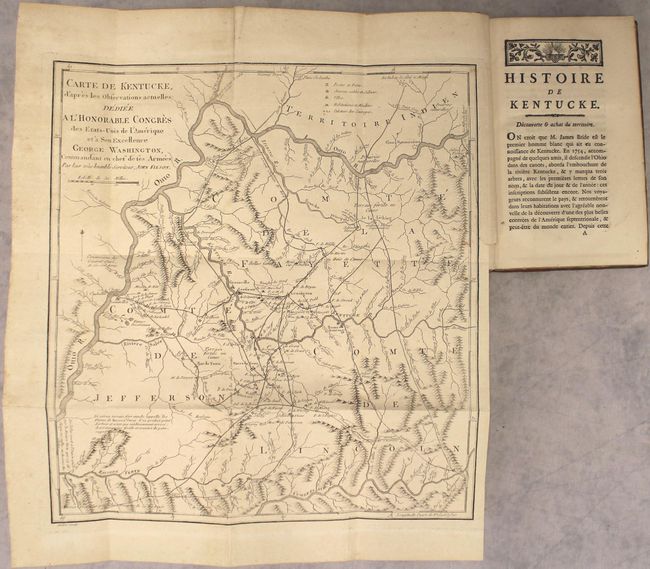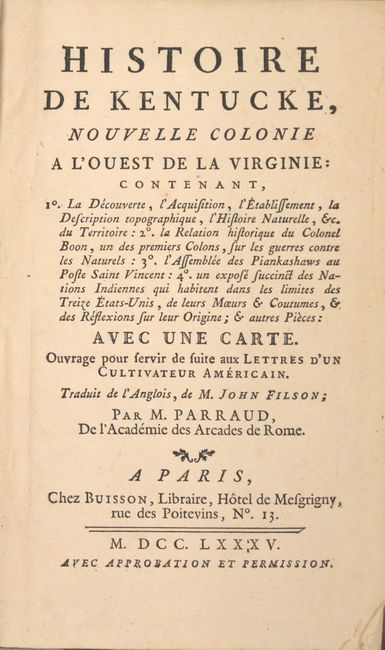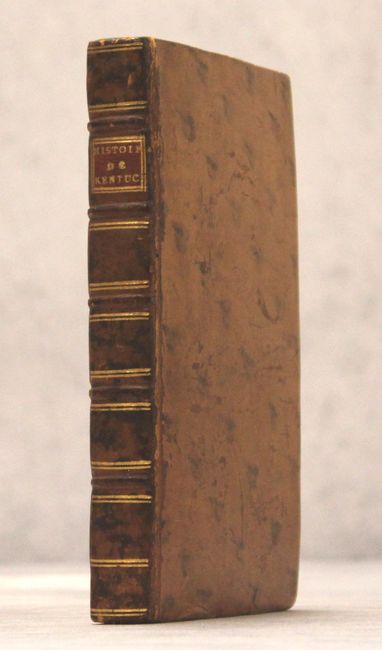Subject: Kentucky
Period: 1785 (published)
Publication:
Color: Black & White
Size:
12.6 x 13.6 inches
32 x 34.5 cm
Filson's landmark, rare map of Kentucky extends from the Ohio River in the north to the Cumberland River in the south. It contains numerous notes on the topography and nature of the land and features a legend identifying forts, villages, mills, and even the "huts of savages" (Indian settlements). John Filson (1753 - 1788) was the first Historian of Kentucky. Moving from Pennsylvania about 1782, he settled in Lexington where he divided his time between teaching and surveying land claims. He wrote The Discovery, Settlement and Present State of Kentucke in 1784. The "Map of Kentucke" was engraved and printed in Philadelphia and was reprinted several times prior to 1793 but his plan for a second edition was not realized. He purchased land at the junction of the Ohio and Licking rivers, the future site of Cincinnati, which he named Losantiville. His survey and plan of the town is visible in the structure of today's downtown Cincinnati. In 1788 while on a surveying expedition near the Great Miami River, he disappeared when the party was attacked by Shawnee Indians.
The map is still bound in Histoire de Kentucke, Nouvelle Colonie a l'Ouest de la Virginie, which was translated into French by M. Parraud. The book contains a vast array of information on Kentucky, including the discovery, the acquisition, the establishment, and a description of the topography and nature. Also included is some history on Colonel Daniel Boon and the Native Indians in the region. 234 pp., bound in full mottled calf with gilt title label on spine.
References: Howes #F129; Sabin #24338.
Condition: B+
The map has light toning, a few spots of foxing, and a 1" binding tear at right that has been closed on verso with archival tape. Text is very good with occasional light toning or foxing with some minor worm tracks in the right margin of the last 80 pages. There is an old bookplate on the front pastedown. Covers are lightly rubbed and the joints are slightly cracked.




